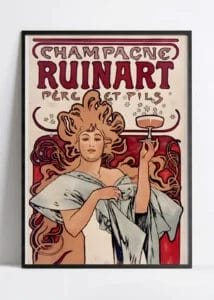
Making champagne is a long process. It will take at least 15 months before it reaches the market. Well-known houses offer a retention period of up to 36 months. For a vintage type champagne, the storage time is longer, between 5 and even 6 years. Once on the market, however, the champagnes are ready to be drunk.
Champagne increases with time, the aromas begin to intensify, but champagne must be stored properly.
Light:
By light and UV rays the freshness of the champagne can be affected. So protect your champagne against any (day) light. The lighting in the champagne climate cabinet is only to show the bottle.
Moisture:
Too much moisture affects the labels on the bottles. The champagne climate cabinet has a “lying” function. This is an important function because the pressure exerted on the bottle keeps the cork moist. This means the bottles will always be flexible and efficient.
Temperature:
Did you know that there are different types of champagnes?
Normal champagne (table champagne)
This type of champagne is considered an “aged” product. It is consumed during the aperitif at the table. Such drinks go well with poultry, sweetbreads, filet mignon, etc. It is also possible to combine this drink with foie gras and cheeses. The advantage of these products at the table is that they are not too acidic.
The dry and rosé champagne
Rosé type champagnes (and dry champagnes) do not require much aging time. The products on the market are very nice, but must be consumed within 2 years. They go especially well with seafood: crayfish, lobster, red fruits and soups.
For other categories such as extra dry, dry, semi-dry and sweet rosés, most are not vintage. Vintage products can be enjoyed with desserts. On average, the sugar content in champagne is 3 g, which is normal. This type of wine is also suitable for spicy dishes.
